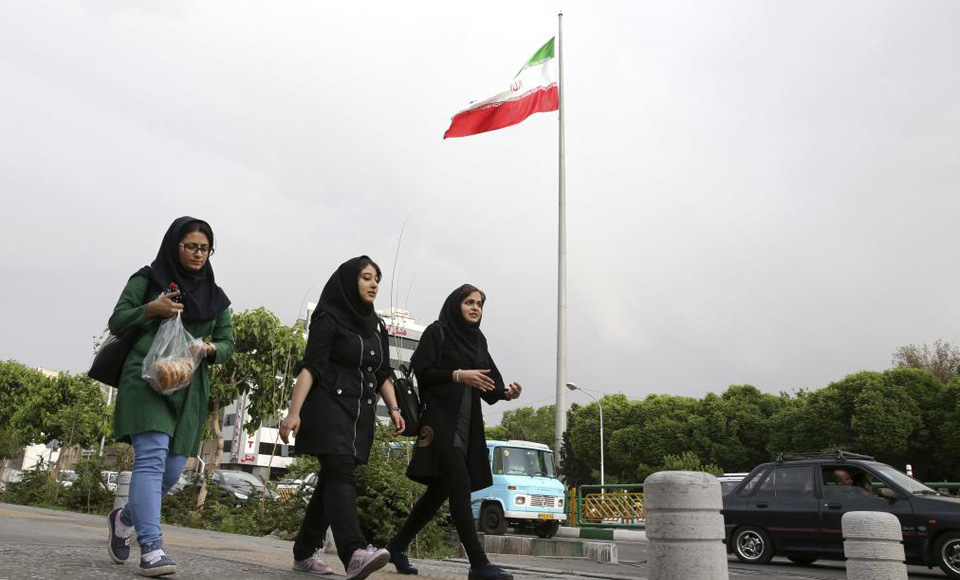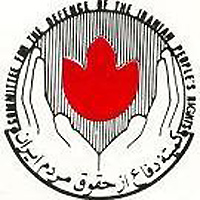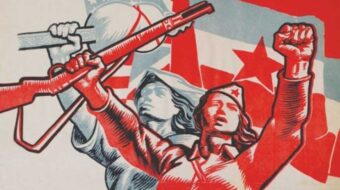
The nuclear deal signed between Iran and the West in 2015 began the process of dismantling the sanctions imposed on Iran which were crippling the country’s already fragile economy.
The lack of access to foodstuffs, technology, and medical supplies exacerbated an already backward, highly exploitative, and deeply discriminatory system of social and economic policies practiced by the regime.
Even before the nuclear deal brought about the promise of a relaxation of sanctions, the regime in Iran adhered rigidly to the economic and social template of the World Bank, the IMF, and other international institutions determined to manipulate the market in Iran in the interests of the West.
The consequences of these policies, which included changing or abolishing labor rights, brought catastrophic conditions for the people of Iran.
But it is the women of Iran who bear the brunt of the hardships these policies cause – namely, increasing poverty, unemployment, malnourishment, and the predominance of temporary forms of employment contract.
Blocking equality
In April last year, the overall unemployment rate in Iran was just over 11 percent. Despite the fact that the rate of women gaining higher education increased by more than 500 percent in recent years, the number of women in paid employment is very low due to open and hidden restrictions.
Women have been so successful at gaining admission to universities that the regime decided to counter the trend by introducing regulations to prevent male candidates becoming outnumbered.
The regime has also embarked upon a program of pushing women back into the home through campaigns emphasizing the virtues of housework and bringing up children — as opposed to working outside the home.
In the workplace, female workers are offered incentives to go part-time, retire early, or take employment in areas designated as more female-oriented. These are, of course, poorly paid and insecure.
In addition, the regime has mounted legal and civil obstacles against women through discriminatory laws and has tried to justify it with sharia. As a result, a large number of women from low-income families are forced to work in small workshops or the informal sector with no safeguards.
The employment law, for instance, does not cover workshops with a workforce of fewer than 10 workers and employers can hire and fire at will. Independent trade unions are not allowed in the workplace, so there is no monitoring of wage levels and conditions of service.
A byproduct of the above policies and practices has been to drive some women into prostitution and drug addiction.
The UN’s Fourth World Conference on Women, held in Beijing back in 1995, confirmed that the most important economic and social improvement in the life of women may be facilitated through their greater economic participation through employment.
Governments have a duty to put in place laws that allow equal access to economic resources. However, the retrogressive regime in Iran, with its adoption of sexually discriminatory policies in all fields, has limited women’s access even further.
Iran’s regressive stance on women’s rights is visible in its attitude to international conventions.
More than 191 countries are members of the 1979 UN Convention on the Elimination of All Forms of Discrimination Against Women. But it wasn’t until 2003 that the then president Mohammad Khatami agreed to join the convention. However, Iran’s reactionary Guardian Council refused to ratify the move.
Then, back in 2013 as part of his successful presidential election campaign, Hassan Rouhani promised that he would join the convention. But there has been no movement on this yet.
Women respond
To challenge their barbaric and outdated treatment, many women have banded together forming independent women’s organizations, promoting progressive social and cultural activities with the aim of improving literacy among deprived women, fighting the regime’s drive to popularize its misogynistic culture, and participating in the wider collective political struggle.
Iranian women continue to demand the repeal of the misogynistic laws enshrined in Iran’s constitution and the civil law.
Under such laws, women are reduced to second-class citizens and their persecution is legally sanctioned, supposedly in accordance with sharia law.
Iranian women continue to fight for the reinstatement of the rights taken from them by the Islamic Republic.
The struggle of Iranian women encompasses a broad range of issues. Iranian women demand the right of employment; of equal standing as witnesses; equal rights in marriage and inheritance; the right to travel without the permission of their husband or male guardian; the right to the custody of children; the annulment of the right of polygamy for men; raising the age of criminal trial for female children to 18; and pressing Iran to join the various conventions on the treatment of women.
In the economic sphere, and that of civil society, women in Iran are deprived of the right to form and belong to independent trade unions or political organizations.
Their civil organizations are brutally suppressed and any peaceful movement is met with repression, humiliation, arrest, and torture.
Members of the Democratic Organization of Iranian Women, a founder member of the Women’s International Democratic Federation since the 1940s, were attacked severely and banned in the crackdown against progressive forces in the 1980s.
Sanctions worsen conditions for advance
In spite of these pressures, women have shone in culture, sport, and education – defying the theocratic regime’s opposition and attempts to restrict them.
For example, once Iranian women only had the exclusive role of vocal performers in music. In the past 40 years however, women have revolutionized the Iranian traditional classic music genre by becoming experts in all instruments.
The women’s struggle against medieval laws continues in the face of great difficulties and hardship. There are many female political prisoners suffering inhuman conditions.
Among them are women of all ages, young and old, peace activists, students, lawyers, journalists, workers, “housewives,” and even mothers mourning their children.
In the years since the 1979 revolution, women in Iran have shown their resilience and significance in many fields. Consolidating these achievements and fighting the clergy is a daily battle.
However, it is a battle in which the younger generation of Iranian women are prepared to engage more readily, as they reject the traditional role of homemaker and seek to establish independent careers.
Any attempt to re-impose sanctions or further isolate Iran from the international community will play into the hands of the clergy.
Any further weakening of the economy will lead to increased calls for jobs to be protected for men, and for women to be forced back into “traditional” roles.
The nuclear deal is far from perfect, but it pulled the two sides back from military conflict. Of course, both Iran and the West have their hidden agendas. But for the women of Iran, the more open the culture and economy is to progressive influences, the better their chance of progressive gains.
If women are able to progress, the whole of society will benefit.












Comments